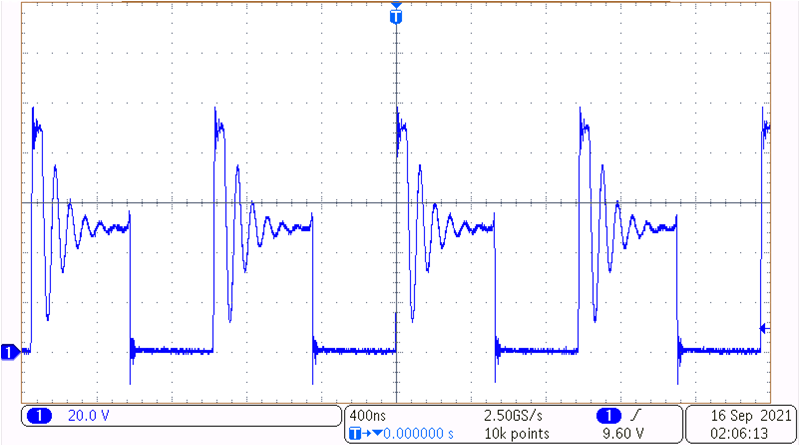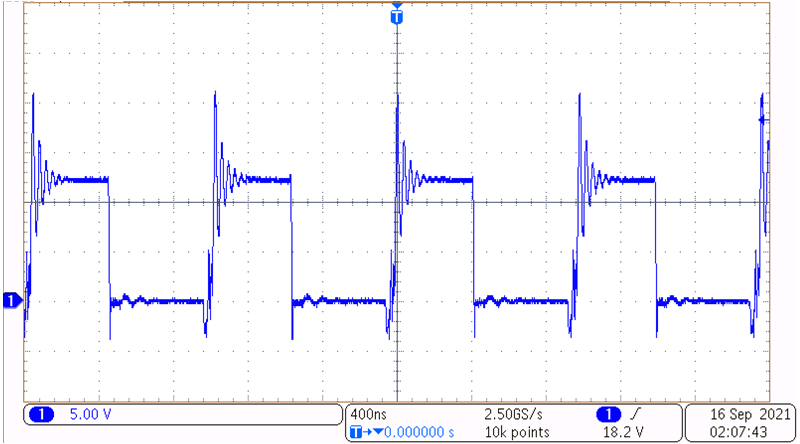SLVAF95 april 2023 TPS7H5001-SP
2.1.2.8 Component Stresses
For the test in Figure 2-11 and Figure 2-12, 28 V was applied to the input and 10 A was drawn from the output. For the output FET and diode stress, the voltage was measured with respect to ground so the output voltage must be added to show the true stress on the output diode.
 Figure 2-11 Voltage Stress on Main
Switching MOSFET
Figure 2-11 Voltage Stress on Main
Switching MOSFET  Figure 2-12 Output FET and Diode
Stress
Figure 2-12 Output FET and Diode
Stress